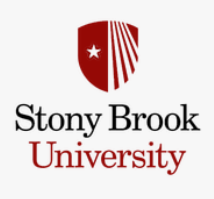Stony Brook University's Reality Deck, a cutting-edge immersive visualization facility, is aiding researchers in understanding and predicting storm surge emergencies. By simulating extreme weather scenarios on a computing cluster and immersing users in a 360-degree environment, the Reality Deck allows for real-time visualization of flooding events, enhancing decision-making during crises. This
RapidAI has announced the receipt of U.S.
Stony Brook University's Ookami supercomputer, operational since 2020, has joined the National Science Foundation's ACCESS (Advanced Cyberinfrastructure Coordination Ecosystem: Services & Support) program as a resource provider. Ookami is the first system outside Japan to utilize the A64FX processor developed by RIKEN and Fujitsu, which was also employed in the Fugaku supercomputer, previously the world's fastest machine.
Researchers at the University of Maryland's Human-Computer Interaction Lab have developed DramatVis Personae (DVP), a web-based AI tool designed to help writers identify and address stereotypes in their creative works. DVP analyzes characters in a narrative by tracking mentions and actions, allowing authors to assign demographic information such as age, ethnicity, and gender. The tool visualize
Stony Brook University's Reality Deck, located in the Center of Excellence in Wireless and Information Technology (CEWIT), offers an immersive 1.6-billion-pixel virtual reality experience. Designed by Dr.
Softheon, a Stony Brook-based digital health company, is expanding its services beyond the Affordable Care Act and Medicaid marketplaces following its merger with NextHealth Technologies, an AI-driven healthcare analytics firm. This acquisition enables Softheon to enhance care management by leveraging AI to guide patients toward more efficient healthcare options, potentially saving significant medical and operational costs.
Snopes offers guidance on identifying social media bots, which are automated accounts used for various purposes, including boosting follower counts and influencing public opinion. Indicators of bot accounts include a lack of a profile picture, generic usernames, low follower counts, limited posts, and low engagement rates. Bots often exhibit behaviors such as click or like farming, hashtag hij
Stony Brook University has awarded its inaugural ProFund Seed Grants to six interdisciplinary research projects aimed at enhancing competitiveness for federal funding. The selected initiatives span diverse fields, including advanced materials science, quantum processing, environmental health, energy storage, digital histopathology, and sustainable ammonia synthesis. Each project is led by a pr
Researchers at the University of Central Florida (UCF) have developed an innovative device that mimics the human retina, enabling artificial intelligence (AI) to instantly recognize and process visual information. This breakthrough combines sensing, memory, and processing into a single compact unit, significantly enhancing speed and efficiency compared to traditional systems. The device operate
In 2022, researchers from the Allen Institute for Artificial Intelligence (AI2), including CEO Oren Etzioni and research scientist Jesse Dodge, received the Association for Computational Linguistics (ACL) 10-year Test-of-Time Paper Award. They were honored for their influential 2012 papers: "Open Language Learning for Information Extraction" and "Midge: Generating Image Descriptions from Computer Vision Detections."


